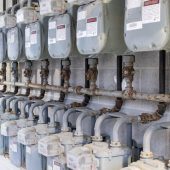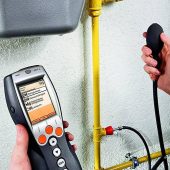When they are in a perfect working condition, laser distance meters are highly accurate. But they are not guaranteed to always be precise.
Over time, the laser distance meter may lose some of its accuracy, which can be a major problem for professionals.
An accidental drop, exposure to cold temperatures or a malfunction can also cause the meter to become imprecise.
You should calibrate your laser meter at least once a year or after a drop or exposure to extreme temperatures just to make sure it’s still working properly.
Read on to learn more on how to calibrate a laser distance meter.
Laser Meters Calibration Process
Different laser meters have varying calibration processes. Consult the manual that came with your meter for specific instructions.
If you don’t have the product manual or it doesn’t provide any guidance on calibration, contact the manufacturer.
Laser distance meters can be calibrated in one of three ways: manual, automatic calibration or professional calibration.
Manual Calibration
Manual and automatic calibration are similar in that you don’t need to send the laser distance meter to the manufacturer for calibration.
With manual calibration, it’s up to you to decide how off the meter is.
Start by using a steel tape measure to get an accurate distance between two points. Then, take the laser distance meter and measure the same distance. We recommend taking several laser measurements then doing an average to get a more accurate reading.
If there’s a difference between the tape measure and laser meter measurements, adjust the laser meter accordingly. Check the instruction manual on how to calibrate the meter to take accurate measurements.
Manual calibration is common with entry-level laser distance meter such as the TACKLIFE HD40m. Here’s a video showing how to calibrate this meter.
Automatic Calibration
With automatic calibration, the laser distance meter does most of the work. All you need to do is go to the calibration feature or option in the user menu.
Select that option and then follow the instructions. You may be asked to set the meter in different positions. It’ll automatically calibrate itself.
You can check the accuracy of the meter by comparing its measurement with that of a traditional tape measure.
Here’s a quick video on how to use automatic calibration in the Leica DISTO laser distance meter.
Professional/ Factory Calibration
Most high-end laser distance meters need professional calibration. If you realize that the meter is off by a few inches, you’ll need to send it back to the factor for re-calibration.
Professional calibration is also important if the meter falls down, is hit by something or is exposed to extreme temperatures.
Bosch, Johnson Level and various other brands recommend sending in your laser distance meter for calibration if it is taking inaccurate readings.
There are also companies that offer professional calibration and even provide you with a calibration certificate.
A calibration certificate is essential for professionals as it proves your measurements are accurate.
Regular Checks
Even if the laser meter has not fallen or been left out in the snow, it can still lose accuracy. For this reason, most manufacturers recommend once a year accuracy checks.
If you need to maintain an up to date calibration manual, you may need to send in the laser meter for calibration after a certain period, whether it’s reading accurately or not.
I hope this helps. If not, and you still have questions on how to calibrate a laser distance meter, please leave a comment below.


